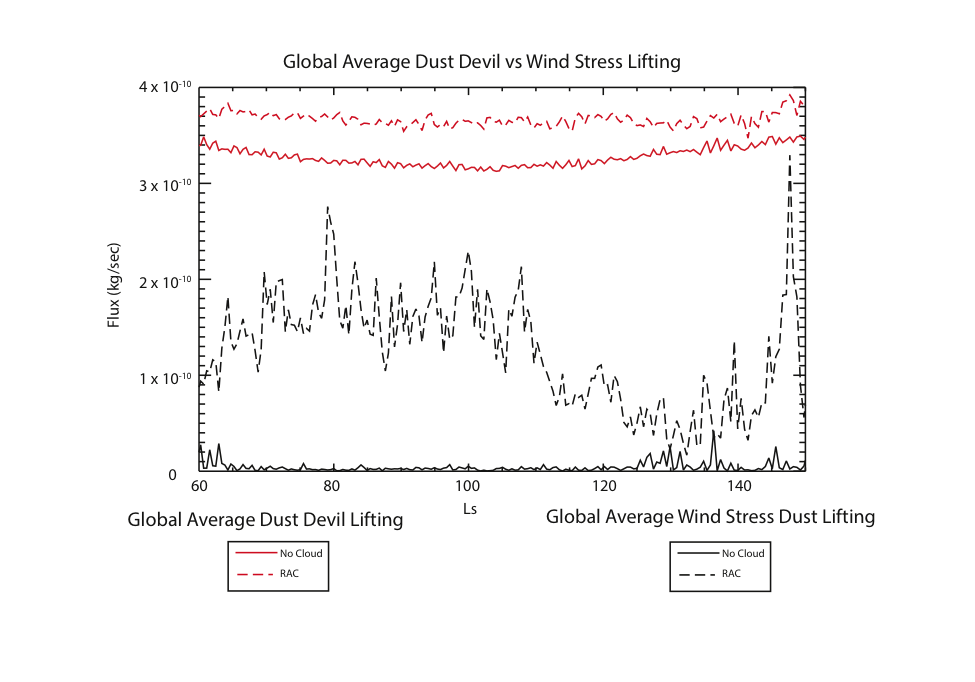Mars has low levels of dust in the atmosphere during Northern Hemisphere (NH) spring and summer. The two processes primarily responsible for the majority of dust lifting from the surface of Mars are lifting due to surface wind stress and dust devils. It has been found by observational and modeling studies that the dust devils primarily maintain the background dust loading during this season. It is now known that water ice clouds influence the thermal and dynamical structure of the Martian atmosphere and can thus affect dust lifting. In this study, we investigate the impact of radiatively active water ice clouds on predicted dust lifting with the NASA/Ames Legacy Mars Global Climate Model (GCM).
The GCM contains physical representations of both water and dust cycles. The GCM has routines for representing the physics of lifting, transport, and sedimentation of radiatively active dust (Kahre et al., 2006). Airborne dust interacts with solar and infrared radiation, acts as ice nuclei, and undergoes gravitational sedimentation as free dust and as cores of water ice cloud particles. The dust devil scheme is based on the thermodynamic theory of Renno et al. (1998). The dust lifting schemes are tuned to produce reasonable dust loadings throughout the Martian year.
We find that the inclusion of radiatively active clouds (RAC) results in an increased contribution from wind stress-based lifting (relative to dust devil based lifting) to the background dust opacity during NH spring and summer as a result of radiative/dynamic feedbacks (Figure 1). Clouds in the aphelion cloud belt warm the atmosphere aloft at low latitudes, which increases the strength of the mean overturning circulation. The stronger overturning circulation produces an enhanced low-level flow in the Hadley cell return branch, which in turn produces higher surface stresses and frictional velocities. These higher stresses increase the wind stress dust lifting rates directly and therefore produce a higher overall dust loading. Although the inclusion of water ice clouds leads to an increase in the contribution from wind stress lifting to the dust loading during NH summer, we find that dust devils are still critically important for maintaining the background dust haze.




























